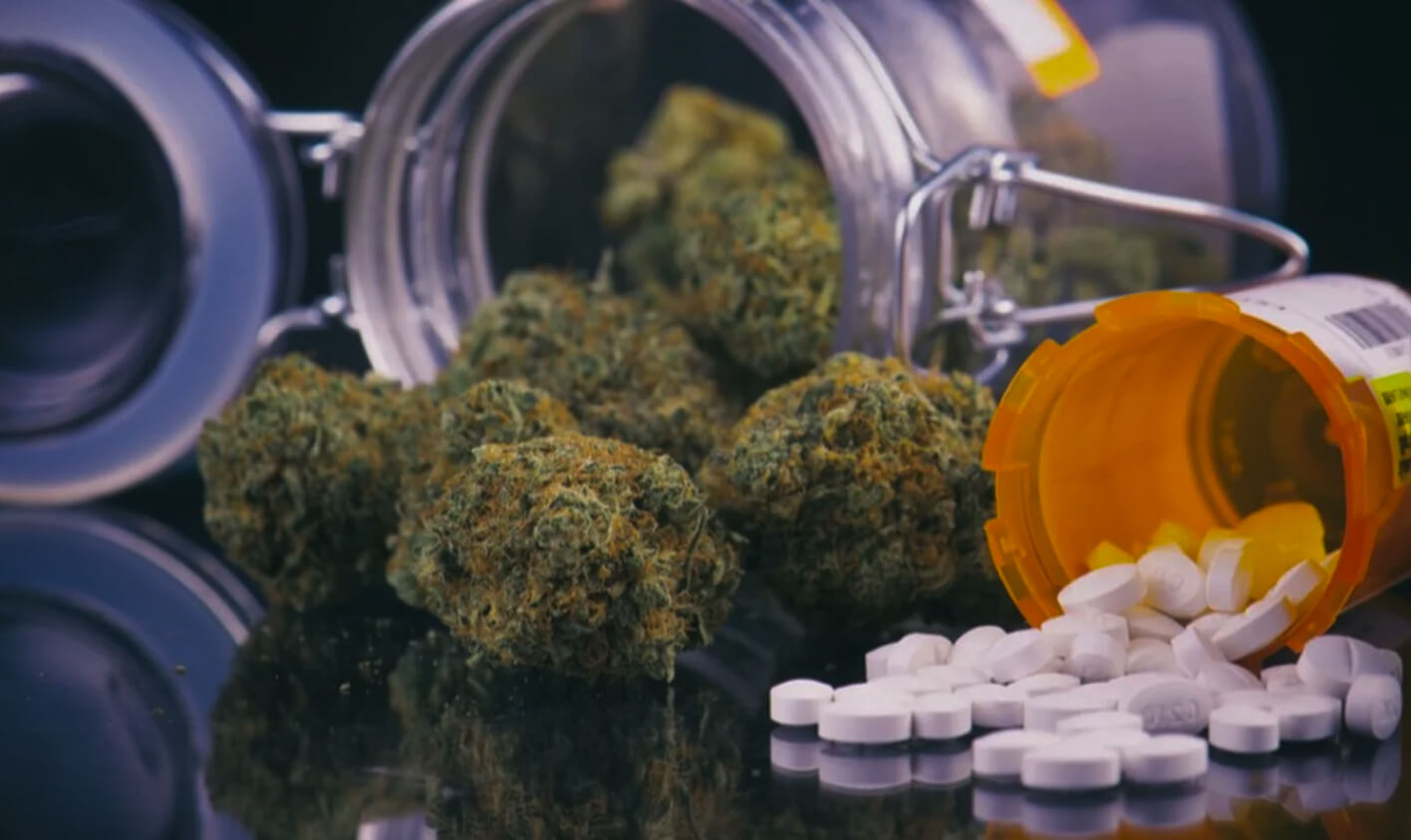What Happens When You Mix Oxy and Weed?
The use of marijuana, commonly known as weed, has been steadily growing over the past few years as states decriminalized or legalized it. Whether it’s used medicinally or recreationally, marijuana is often perceived as a natural drug with potential medicinal benefits. However, it is not necessarily a healthy alternative to prescription medications like painkillers.
Unfortunately, mixing painkillers—like oxycodone (oxy), Percocet, and hydrocodone—and weed can be a dangerous combination.

Frequently Asked Questions
Is It Good to Combine Percocet and Weed?
Combining Percocet and weed can be dangerous and should only be considered under the strict supervision of a healthcare professional. These drugs are both depressants and can be a potentially fatal combination, leading to symptoms like an extreme drop in blood pressure, hypoxia, seizures, coma, and death.
Can You Mix Hydrocodone and THC?
THC, the main cannabinoid in marijuana, can cause adverse effects when mixed with other drugs, including hydrocodone and other opioids.[9] Combining the two depresses the central nervous system, leading to drowsiness, loss of coordination, hypoxia, coma, and death.
Can You Eat Edibles While Taking Medication?
Depending on the medication, mixing it with edible cannabis products can have dangerous interactions.[10] Aside from opioid painkillers, blood thinners, antidepressants, and anticholinergics, such as those for Parkinson’s disease, should not be mixed with edible cannabis products. Sympathomimetics, such as nasal decongestants, appetite suppressants, and some ADHD medications, are also contraindicated with marijuana.
What Drugs Shouldn’t Be Taken with CBD?
Cannabidiol (CBD), another cannabinoid in marijuana, is different from THC. It’s touted for its therapeutic effects, not psychoactive effects, but it can still have dangerous interactions with other drugs.[11] Avoid mixing CBD with anticonvulsants, barbiturates, other sedative drugs, and narcotics like opioid painkillers.
Bloomfield, M. a. P., Ashok, A. H., Volkow, N. D., & Howes, O. D. (2016). The effects of Δ9-tetrahydrocannabinol on the dopamine system. Nature, 539(7629), 369–377. Retrieved from https://doi.org/10.1038/nature20153 on 2024, June 20.
Volkow, N. D., Baler, R. D., Compton, W. M., & Weiss, S. R. (2014). Adverse health effects of marijuana use. New England Journal of Medicine/the New England Journal of Medicine, 370(23), 2219–2227. Retrieved from https://doi.org/10.1056/nejmra1402309 on 2024, June 20
U.S. Department of Health and Human Services. (2023, May 25). Prescription opioids Drugfacts. National Institutes of Health. Retrieved from https://nida.nih.gov/publications/drugfacts/prescription-opioids on 2023, June 21.
Centers for Disease Control and Prevention. (2022, May 11). U.S. overdose deaths in 2021 increased half as much as in 2020 – but are still up 15%. Centers for Disease Control and Prevention. Retrieved from https://www.cdc.gov/nchs/pressroom/releases/20220511.html on 2023, June 21.
Cooper, Z. D., Bedi, G., Ramesh, D., Balter, R., Comer, S. D., & Haney, M. (2018, February 5). Impact of co-administration of oxycodone and smoked cannabis on analgesia and abuse liability. Nature News. Retrieved from https://www.nature.com/articles/s41386-018-0011-2 on 2023, June 21.
Teens Mix Prescription Opioids with Other Substances | NIDA Archives. (2013, April 8). Retrieved from https://archives.nida.nih.gov/research-topics/trends-statistics/infographics/teens-mix-prescription-opioids-other-substances on 2024, June 20.
McCabe, S. E., West, B. T., Teter, C. J., & Boyd, C. J. (2012, November 1). Co-ingestion of prescription opioids and other drugs among high school seniors: Results from a national study. Drug and alcohol dependence. Retrieved from https://www.ncbi.nlm.nih.gov/pmc/articles/PMC3478441/ on 2023, June 21.
Polysubstance use facts. (2024, April 2). Stop Overdose. Retrieved from https://www.cdc.gov/stop-overdose/caring/polysubstance-use.html on 2024, June 20.
Antoniou, T., Bodkin, J., & Ho, J. M.-W. (2020, March 2). Drug interactions with cannabinoids. CMAJ : Canadian Medical Association journal = journal de l’Association medicale canadienne. Retrieved from https://www.ncbi.nlm.nih.gov/pmc/articles/PMC7055953/ on 2023, June 21.
Antoniou, T., Bodkin, J., & Ho, J. M.-W. (2020, March 2). Drug interactions with cannabinoids. CMAJ : Canadian Medical Association journal = journal de l’Association medicale canadienne. Retrieved from https://www.ncbi.nlm.nih.gov/pmc/articles/PMC7055953/ on 2023, June 21.
Balachandran, P., Elsohly, M., & Hill, K. P. (2021, July). Cannabidiol interactions with medications, illicit substances, and Alcohol: A Comprehensive Review. Journal of general internal medicine. Retrieved from https://www.ncbi.nlm.nih.gov/pmc/articles/PMC8298645/#on 2023, June 21.